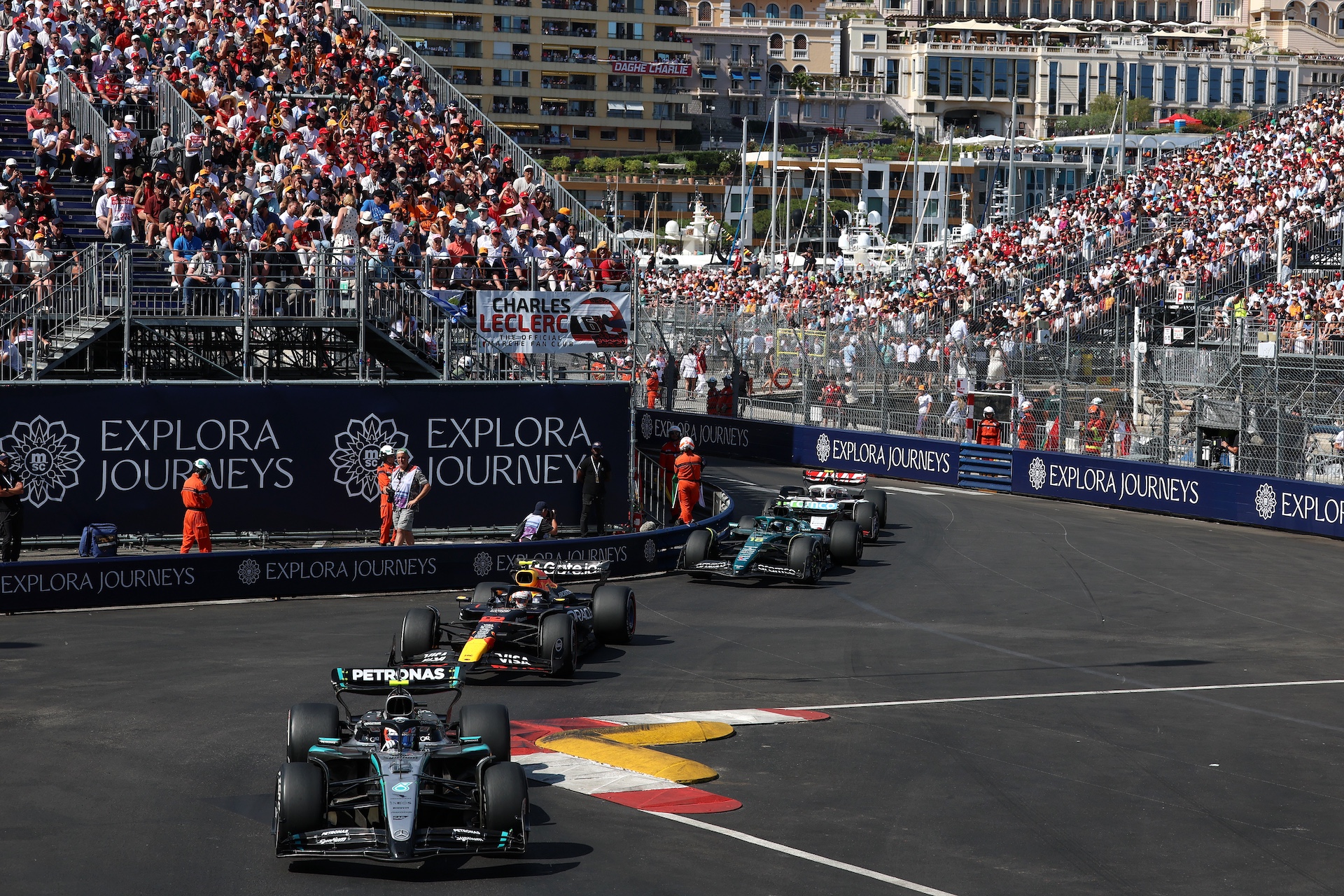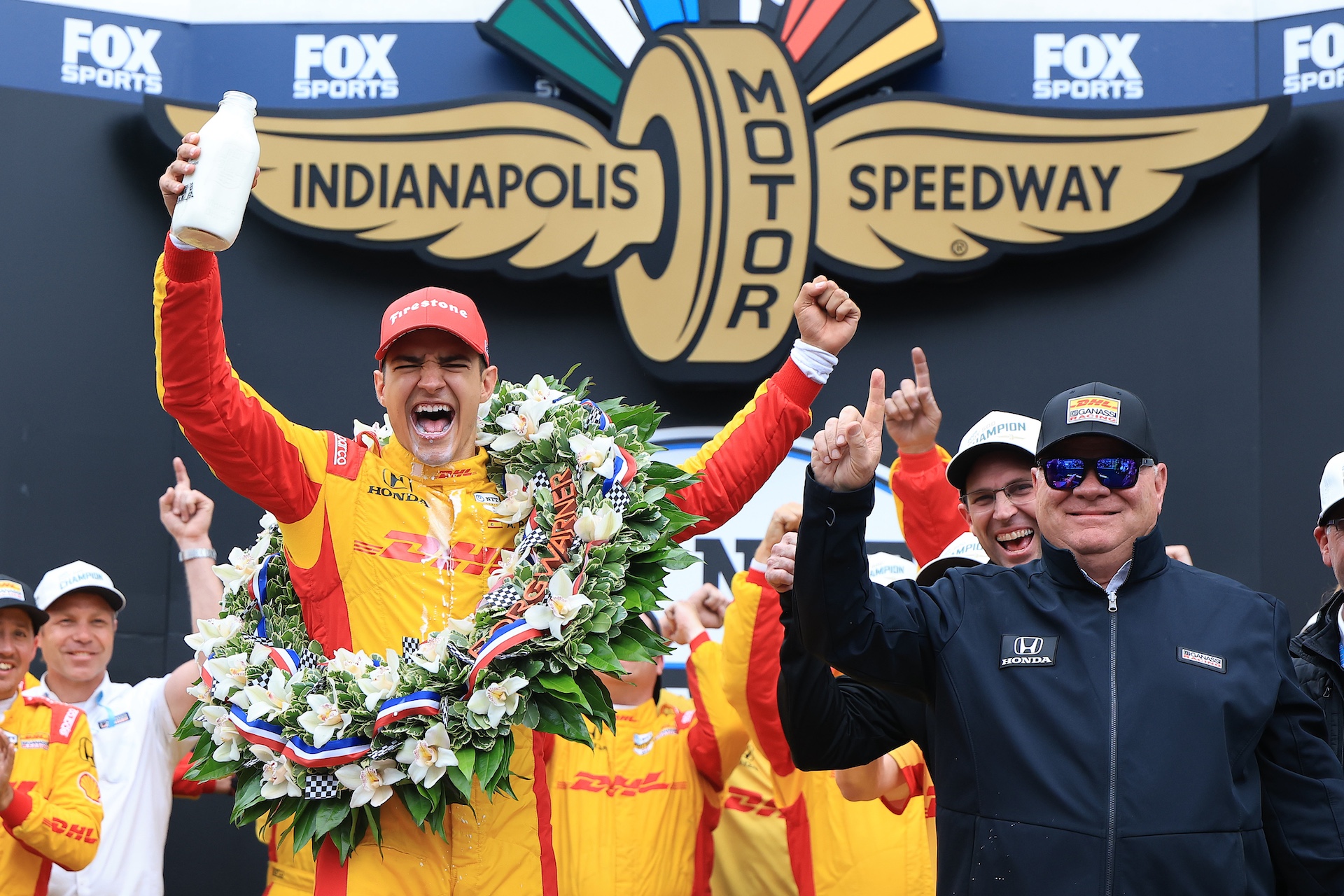
Around this time each year, the racing world is inundated with a flurry of headlines, social media threads, and think pieces slamming Formula 1‘s Crown Jewel, the Monaco Grand Prix. The main thing they all have in common is the word “boring.” This Sunday was no different, despite F1’s best and latest efforts.
Since F1 first broke ground in the U.S., it has been tasked with competing with its closest cousin, IndyCar—and its own pride and joy, the Indy 500. When the two occupy the same Sunday, followed by NASCAR’s Coca-Cola 600, it is nearly impossible not to compare F1’s most glamorous race with “The Greatest Spectacle in Racing.” As the sport fails to find solid ground in the principality and the GP’s title is up for contention with calls to strike it altogether from the 24-race calendar, moving the Grand Prix date to the first weekend in June starting next year could be the best thing for its future viability.
Sunday, the day that some racing fanatics wait all year to enjoy, started on the narrow, winding streets of Monte-Carlo. F1 introduced a mandatory two-pitstop rule this year in an effort to slice through fan complaints that the highly anticipated annual race looked more like a slow Sunday drive than a wheel-to-wheel fight to the finish line. Monaco’s greatest challenge as the sport, its formula, and its cars evolved through the decades, is overtaking—or a lack thereof. In 2023, F1 drivers overtook the car in front just 22 times, which was nearly double the year before. In 2024, that number was just four.



While F1’s new race format gave viewers more race substance to sink their teeth into and looked less like a funeral procession compared to previous years, it didn’t shake up the grid as much as promised. Lando Norris, who started on pole, finished the race first, followed by the same top four qualifying format: Charles Leclerc, Oscar Piastri, and Max Verstappen. While a select few drivers took full advantage of the new regulations—like Oliver Bearman starting dead last and clawing his way just outside the points to P12—most remained within one or two places from where they started.
After the checkered flag flew and trackside viewers returned to their yacht parties, drivers were critical of the new format. Carlos Sainz said it slowed down an already snail-like 78 laps and created contrived racing: “In the past, there were huge penalties for manipulating a race. Ultimately, we are not crashing, but we are driving so slow that we are manipulating a race.” Sainz and fellow Williams driver Alex Albon took turns holding up the two Mercedes so both could pit without losing points-scoring position. Verstappen had a similar outlook. “You can’t race here. It doesn’t matter what you do. One stop, 10 stops,” the Red Bull driver said while joking that Mario Kart-like obstacles would improve the race.
Over 4,500 miles away, the 109th running of the Indianapolis 500 supplied the kind of racing F1 desperately lacked. The Indy 500 can be summed up in one statistic: It is the largest annual single-day non-religious gathering of human beings on earth. (Although, for a city with a bit of a one-track mind, the “non-religious” part might be up for debate.) And while Monaco carries a similar fidelity for motor racing, the two race-host locations speak to opposite viewership experiences. One is the glitz and glamour synonymous with F1’s multi-million dollar drivers and the tax-free seaside pocket of paradise they inhabit. The other is more modest and is flavored with something fundamentally Americana. Both are desperately trying to catch more Americans’ eyes, however.



IndyCar has attempted to recreate F1’s American success, whether through its own docuseries or relying on content creators and influencers to remain relevant at the top of fans’ social media feeds—all while insisting it cannot be compared to its European counterpart. Whether it is F1’s star-studded cast of drivers, yacht-dotted trackside charm, or globe-trotting tour around the world, the series has created a cult-like following in the U.S. that IndyCar just hasn’t seemed to land. Despite IndyCar’s tendency to outperform F1 in U.S. TV viewership—racking in an average of 1.7 million viewers per race on NBC in 2024 compared to F1’s 1.11 average ESPN spectators—F1’s appeal has swelled rapidly, with a 2022 poll reporting that 28 percent of American adults considered themselves F1 fans. In 2024, it became the most popular yearly sporting series with 750 million global fans, according to Nielsen Sports.
But despite the series’ commercial success in the States over the past six years after Netflix’s sporty and soapy peek inside the lives of F1’s 20 drivers was released, the European racing series hasn’t brought much of a fight to the day it matters most. For all that Formula Fever has achieved, F1 has failed to replicate an event like the Indy 500.
Once the “Crown Jewel” of the F1 calendar, the Monaco GP’s record U.S. TV viewership in 2024—coming in at 1.965 million people tuning into ESPN—failed to come anywhere close to the series’ string of new stateside grands prix. The Miami GP plucked the crown from Monaco with 3.1 million ABC viewers in 2024, a new record for the sport’s U.S. TV audience.
A new day on the calendar won’t change the Monaco GP’s fundamental flaws, but it could lessen expectations by not sharing IndyCar’s biggest day of the year.
Got a tip? Email us at [email protected]
